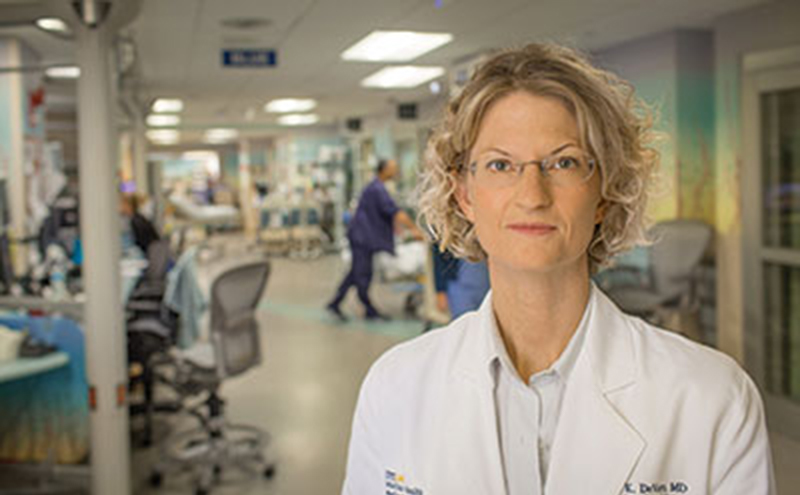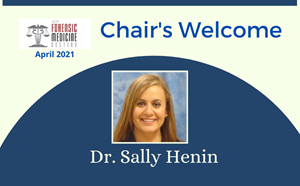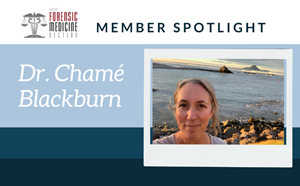
24/7 Forensic Trauma Nurses: How We Did It And What We Learned
An interview with former District of Columbia Forensic Nurse Examiners Director, Heather DeVore, MD.
DC Forensic Nurse Examiners (DCFNE) is a nonprofit organization whose mission is to lessen the impact of violence in the District of Columbia. They are they only adolescent/adult forensic nursing program in the District of Columbia who provide medical forensic exams and evidence collection for victims of sexual assault and intimate partner violence. Additionally, they have trained forensic nurses who are one site 24/7 at MedStar Washington Hospital Center and respond to traumas of intentional injuries including gunshot and stab wounds. I spoke with Dr. Heather DeVore who was the executive director and medical director about how she expanded these services in her hospital.
How did you identify the need?
My role in forensics began in 2008 as the medical director for the District’s Sexual Assault Nurse Examiner (SANE) program. Since then, I started paying attention to the variety of patient presentations who may at some point interact with the civil or criminal justice system. As an ED doctor in the trauma bay, I began looking at trauma resuscitations with a forensic lens. We have a lot of penetrating and intentional trauma at MedStar Washington Hospital Center, the busiest Level 1 trauma department in the District. I saw potential evidence lost, wounds hastily stapled before they were photographed, and clothing cut, strewn on the floor and thrown away. Occasionally the police department’s mobile crime unit would come to the hospital but they were often delayed at the scene. Knowing that incomplete investigations could lead to wrongful convictions and exonerations, I recognized that there was a lot of evidence being lost in our trauma bay.
I also saw how physicians and nurses who are not trained in forensics tend to provide scant information and documentation. We are taught that we shouldn’t be “too descriptive” and not to write something down unless you are absolutely sure, especially if it relates to mechanism of a trauma. As an example, while investigating a serial assaulter, the police expressed frustration with a doctor who was asked about a stapled head wound. The doctor was asked if the wound could be caused by a hammer and he responded “I don’t know and I’m not going to say.” The truth of any story is in the details, and forensics can capture and document details so that investigators can piece together the story.
Where did you start?
I began gathering all the information I could from experts around the country. I visited Christiana in Delaware to see how they ran their 24/7 program. I spoke with Jayne Batts from Carolinas who implemented a forensic trauma protocol there and has helped others set up similar ones. I took Dr. Bill Smock’s gunshot wound course. I collected other program’s forms and protocols. Also, I got to know our Medical Examiner, Chief of Police and the Director of the Department of Forensic Sciences.
I developed my “elevator speech” and approached the chair of trauma surgery first. I was prepared with articles and was ready to show him how forensics would help his team. I expressed how having a forensic nurse in the trauma bay would help provide improved and more comprehensive documentation and keep trauma surgeons out of court as fact witnesses. I also relayed anecdotes of particularly bad cases. He bought on early in the process and that opened a lot of doors. I would often talk to the other trauma surgeons while working and polled them how often they went to court, educated them on forensic nurses and how this would benefit them. To be honest, it wasn’t a hard sell.
I then approached our local police and prosecutors with the idea. Offering better evidence and documentation of injuries was an even easier sell to them.
How did you fund your program?
Our organization is external to the hospital and we receive our funding through the Office of Victim Services and Justice Grants, through the mayor’s office. We partnered with other victim service organizations including advocacy, legal and mental health to provide a comprehensive program application. We presented our idea of expanding services to them and they sought federal grants to cover the extra costs. Clearly the hospital was on board since we have external funding.
What was the set-up you designed?
To get any time-sensitive forensic evidence on critical patients, it was imperative that our forensic nurses are in-house and not tied up with other responsibilities such as a lengthy sexual assault exam. We have a 24/7 in-house forensic nurse responding to major traumas and a second 24/7 on-call forensic nurse responding to sexual assault and intimate partner violence. We hired full-time nurses to be our core trauma team. They work an average of one 24-hour on-site shift and a 12-hour on-call shift per week. The transformation from PRN staff to full-time staff has provided significant stability to our organization. All our forensic nurses were previous SANE nurses and we spent several months expanding their training to general trauma. Currently we have nine full-time, two part-time, and eight PRN nurses on staff.
I also want our forensic nurses to be productive in their down time when they are not responding to traumas. They don’t float in the emergency department since they are not hospital employees. Instead they perform follow up with admitted trauma patients, complete needs assessment surveys and connect them with victim advocacy, case management and other social services. They also help with administrative duties including inventory and stocking, evidence release to law enforcement, and completing information databases. Occasionally they respond to the OR to collect retained bullets and package them as evidence for distribution to police department.
What were some unanticipated lessons you have learned?
Some of our nurses, while experienced ED and SANE nurses, still struggled with the amount of trauma and blood they were seeing. We found that we really needed to be mindful of secondary trauma and provide self-care opportunities including monthly peer support groups.
Also, the patients we are seeing are now often not only victims but also perpetrators of violent crimes. This made the patients themselves very skeptical of any type of forensic examiners. We initially approached the evaluation like we did with sexual assault exams and would ask the patient’s specific consent to proceed with our documentation. Not surprisingly, many victims would refuse when flat out asked if we could perform an exam. We took this to our ethics department for review and ultimately concluded that our work was for the health of the community and implied consent was given to evaluate and treat on arrival to the hospital. Our nurses are helping with trauma documentation, diagnosis, treatment and safety planning like other patients and we do not ask for separate specific consent for the work we do.
What has been your experience this far?
Our trauma program began in April 2016. We started with some pre-education (and food!) to the trauma nurses. We emphasized to them that since our team are nurses, we know how to let them do their job and to do ours with as little disruption to the trauma flow as possible. The reception by the rest of the trauma team has been good, although we often re-educate about our role as residents and medical students rotate through the department. Responding police officers and detectives were initially skeptical, even though we had the blessing of the commanders and higher-ups in the department. There were a few “who are you?” conversations. We recognized that this might be an issue and we are confident that as cases progress through the criminal justice system and we develop working relationships that will be more collaborative. The overwhelming reception has been good and as we get more data and experiences we plan to make changes to improve on the system.



